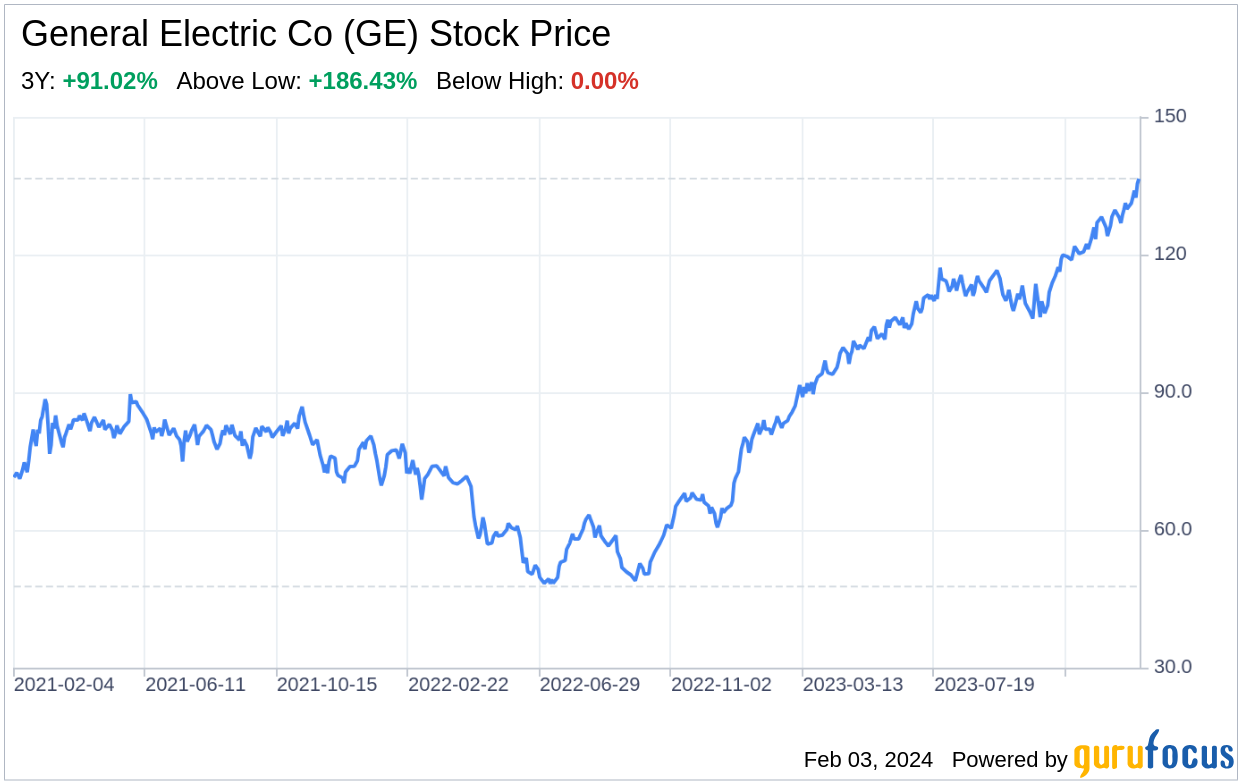On February 2, 2024, General Electric Co (GE, Financial) filed its 10-K report, revealing a company in transformation, with a rich history of innovation and a forward-looking strategy. GE, a global leader in air travel and energy transition, reported a significant revenue increase to $68.0 billion, up from the previous year. This financial performance underscores GE's resilience and adaptability in a dynamic market. With a strategic plan to form three industry-leading, global, investment-grade public companies, GE is poised to capitalize on its strengths while addressing the challenges of a complex global business environment. This SWOT analysis delves into the details of GE's filing to provide investors with a comprehensive view of the company's strategic position.

Strengths
Global Market Leadership and Innovation: GE's century-long legacy of innovation has cemented its status as a market leader in high-tech industrial sectors. With a focus on air travel and energy transition, GE has developed a differentiated product and technology portfolio that positions it at the forefront of these industries. The company's commitment to research and development is evident in its efforts to pioneer next-generation engine programs and renewable energy solutions. GE's global installed base of equipment, including aerospace engines and wind turbines, provides a steady stream of high-margin service revenue, demonstrating the company's ability to leverage its technological prowess for long-term financial stability.
Strategic Business Restructuring: GE's strategic plan to separate into three distinct entities—GE Aerospace, GE Vernova, and the recently spun-off GE HealthCare—reflects a clear vision for streamlining operations and focusing on core competencies. This restructuring is designed to enhance operational efficiency, improve customer focus, and drive growth in each business segment. The successful spin-off of GE HealthCare as an independent company is a testament to GE's execution capabilities and strategic foresight, potentially unlocking shareholder value and enabling more targeted investment strategies.
Weaknesses
Supply Chain Vulnerabilities: GE's extensive global supply chain is susceptible to disruptions, as highlighted in the 10-K filing. The company faces challenges such as raw material shortages, supplier capacity constraints, and production disruptions, which can adversely affect its ability to meet customer commitments and impact profitability. Despite efforts to mitigate these risks through lean initiatives and diversified sourcing, the complexity and interconnectivity of GE's supply chain remain a significant vulnerability that requires ongoing attention and strategic management.
Cybersecurity Risks: As a high-tech industrial company, GE is exposed to cybersecurity threats that could compromise sensitive data, disrupt operations, and damage its reputation. The increasing interconnectedness with suppliers and customers amplifies this risk. While GE has implemented measures to strengthen its cybersecurity framework, the evolving nature of cyber threats and the potential for significant financial and operational impacts necessitate a continuous investment in robust cybersecurity defenses and incident response capabilities.
Opportunities
Growth in Air Travel and Renewable Energy Markets: GE is well-positioned to benefit from the growing demand in the air travel and renewable energy sectors. The recovery from the COVID-19 pandemic and the global shift towards sustainable energy sources present significant opportunities for GE's Aerospace and Vernova businesses. With its advanced technology and service offerings, GE can capitalize on these trends by providing innovative solutions that meet the increasing needs for efficiency and sustainability in these markets.
Alignment with Global Sustainability Goals: GE's strategic focus on developing technologies for a more sustainable world aligns with broader societal and environmental goals. The company's efforts in sustainable aviation fuel, hybrid electric and hydrogen technologies, and renewable energy generation position it as a leader in the energy transition. This alignment not only enhances GE's brand reputation but also opens up new markets and revenue streams driven by regulatory incentives and customer demand for green technologies.
Threats
Economic and Geopolitical Uncertainties: GE operates in a complex global environment where economic and geopolitical developments can significantly impact its business. Factors such as macroeconomic conditions, trade policies, and geopolitical tensions can affect customer investment decisions and disrupt global supply chains. The potential for economic downturns or political instability in key markets poses a threat to GE's financial performance and strategic objectives.
Intense Competition and Technological Disruption: The competitive landscape in which GE operates is characterized by rapid technological advancements and aggressive competitors. The company must continuously innovate and adapt to maintain its market position. Failure to keep pace with technological changes or to meet evolving customer needs could result in lost market share and reduced profitability. Additionally, competitors may develop disruptive technologies that challenge GE's traditional business models, necessitating proactive strategic responses.
In conclusion, General Electric Co (GE, Financial) presents a compelling case of a company with deep-rooted strengths in innovation and market leadership, strategically restructuring to enhance focus and efficiency. However, it must navigate weaknesses such as supply chain vulnerabilities and cybersecurity risks. Opportunities for growth in burgeoning markets and alignment with sustainability goals offer promising avenues for expansion, while economic uncertainties and competitive pressures pose significant threats. GE's ability to leverage its strengths, address its weaknesses, capitalize on opportunities, and mitigate threats will be crucial in shaping its future success.
This article, generated by GuruFocus, is designed to provide general insights and is not tailored financial advice. Our commentary is rooted in historical data and analyst projections, utilizing an impartial methodology, and is not intended to serve as specific investment guidance. It does not formulate a recommendation to purchase or divest any stock and does not consider individual investment objectives or financial circumstances. Our objective is to deliver long-term, fundamental data-driven analysis. Be aware that our analysis might not incorporate the most recent, price-sensitive company announcements or qualitative information. GuruFocus holds no position in the stocks mentioned herein.
